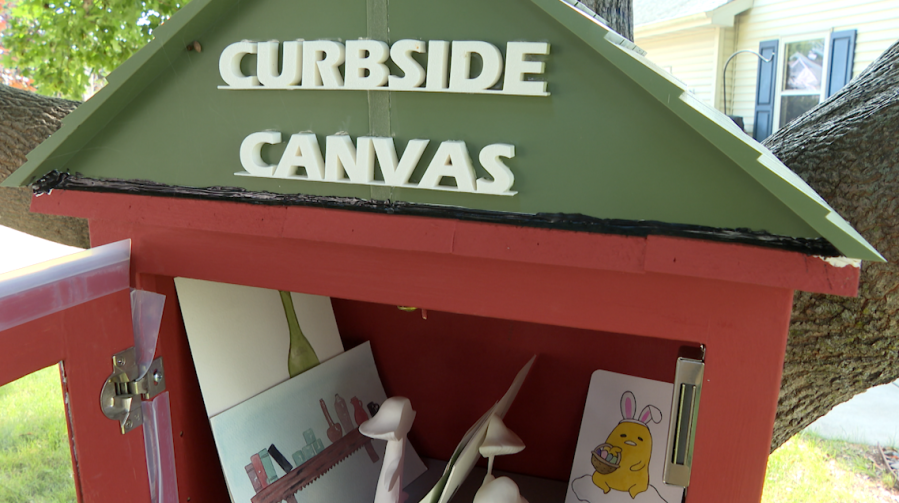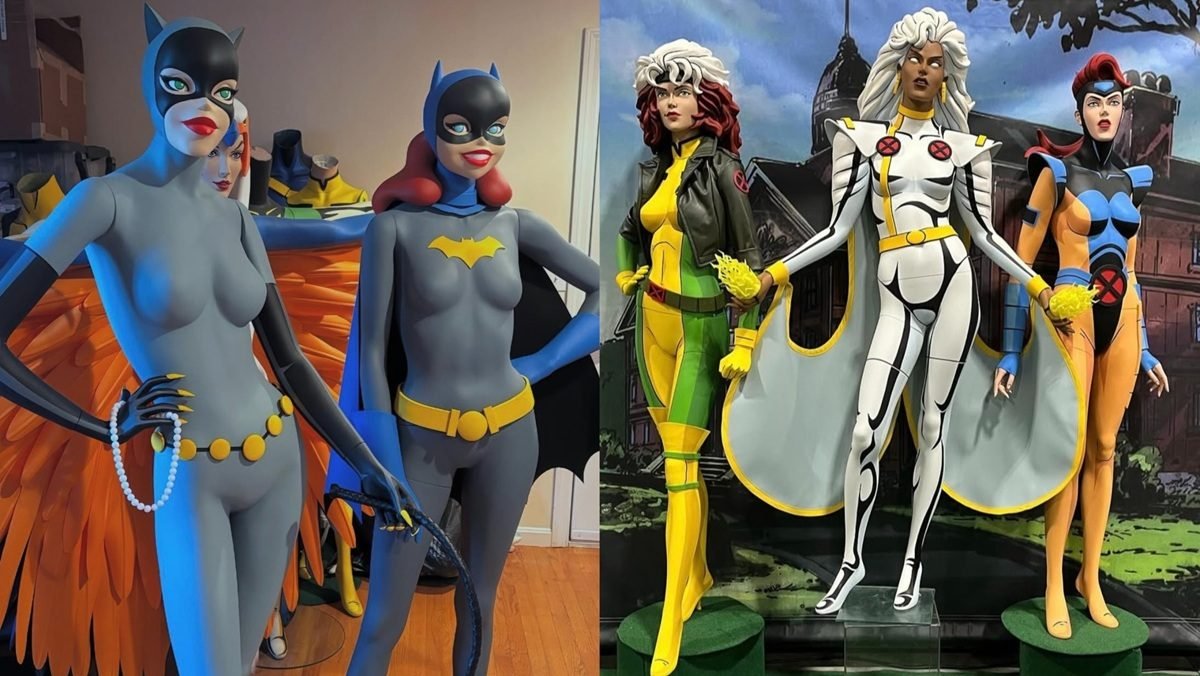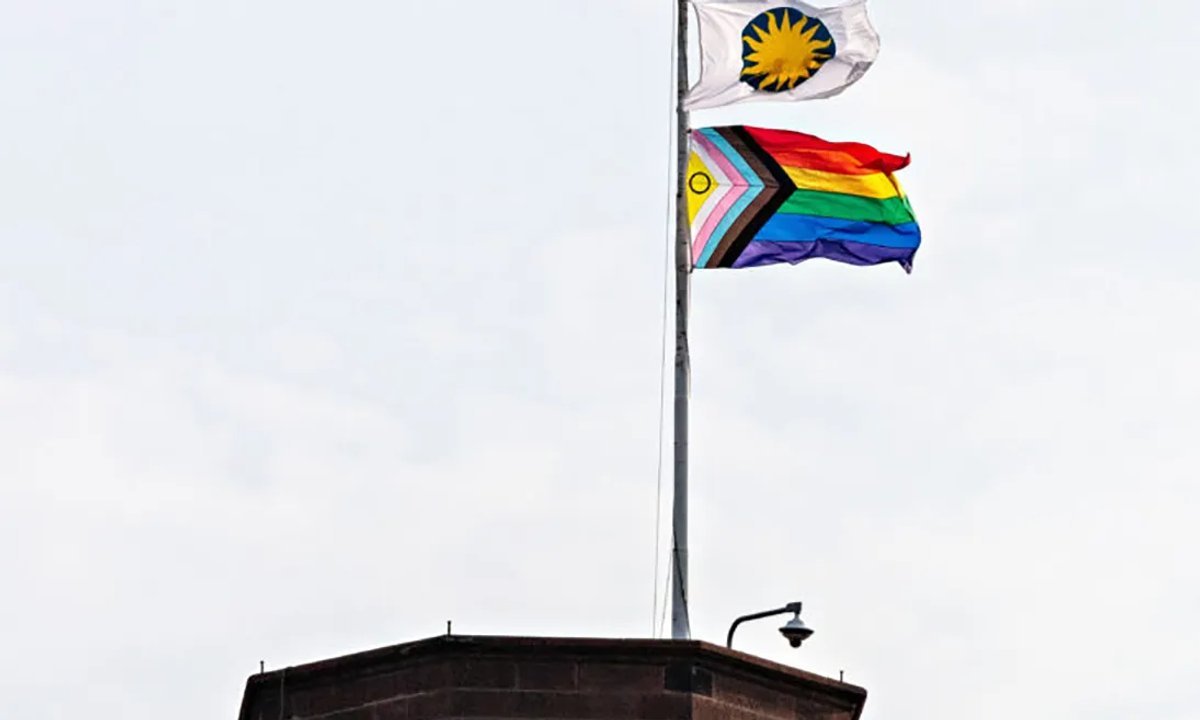
Artist Kiona Wooton Millirons speaks about latest art series after sister’s murder
Kiona Wooton Millirons’ latest art series “Vermilion” depicts the grief of her family after her sister was murdered in 2018.
In a series of small, haunting portraits, Oklahoma City artist Kiona Wooton Millirons paints herself and her family members in pale grays and stark whites, as shadowy versions of the people they used to be.
“These are the ‘ghost portraits’ of my family to convey that we’re still here and still reeling and dealing with the trauma of losing our sister,” Millirons explained in a recent interview at OKC’s Leap Coffee Roasters, where selections from her new painting series “Vermillion” are displayed.
On Dec. 11, 2018, Millirons’ sister, Amber Fawn Clark, 41, was shot 11 times at close range while sitting in her car getting ready to head home from her job as supervisor of the North Natomas branch of the Sacramento, California, public library system.
Just days after her murder, Ronald Seay, who had a long history of mental health-related complaints, including making threats against other librarians, made his first court appearance. But it took three and a half years for Seay, whom Clark had banned from the library branch for his aggressive behavior, to be convicted and sentenced to life in prison.
“We had the trial about two years ago, and in the trial, I started to take notes and draw pictures and really think about how I felt in that courtroom. So, that’s how ‘Vermillion’ developed,” Millirons said.
“There’s 11 pieces of evidence from the trial that made an imprint on me, and then, I really started to think about how I felt in that courtroom, which was invisible, because my sister became the body. She became the victim, and so the family, I just felt like we disappeared.”
How an OKC artist is using her new painting series to explore the loss of her sister to gun violence
The founder and former executive director of the Oklahoma City Girls Art School, Millirons, 50, has worked as a coffee roaster at Leap for almost three years, and she is the 2024 featured artist for the Leap Artist Series Blend program.
Not only is Millirons’ “Resonance”-theme coffee, a dark roast Guatemalan blend, for sale at Leap’s warehouse (as well as online), but she also is displaying selections from “Vermillion” there after showing the full series in an immersive solo exhibition earlier this summer at Positive Space Tulsa.
“One of our main things is that we help and support artists, and we employ artists. … We were with her through the trial here, and we got to support her in just being a safe place for her to come to work,” said Kari Hirst Starkey, co-owner of Leap Coffee Roasters.
“Throughout these two years that she’s been here and started working on her project, we’ve seen her just come out of her shell. … And we wanted to be a part of bringing awareness to this issue of gun violence that continues on — the violence, not the politics of it, not the laws, but just that awareness of how someone that we know and love was affected by it.”
A lifelong artist and mother of two, Millirons recently sat down with The Oklahoman to talk about how she developed her “Vermillion” series, how the trial of her sister’s murderer continues to affect her family and how art has provided an outlet for her:
Q: The 11 large paintings in your series are dominated by this shade of red called vermillion, but I understand that the title has a meaning beyond that?
A: Yes. So, I was reading about the history of color, and vermillion was discovered when they accidentally combined sulfur and mercury. So, you get this beautiful red out of something really beautiful, something very stinky, but something very dangerous, too. Artists would die from the chemicals for that vermillion.
And so, the color represented not only my sister and her death and blood, but became red flag laws and love and passion — so that red just really became central to the whole series.
Q: Can you talk about the contrast with that and the idea behind your ‘ghost portraits?’
A: I really wanted to try to convey that, after gun violence happens to someone and their families, there’s a lot of healing that has to be done: a lot of mental health issues, physical health issues. And every time I hear about a shooting, or a mass shooting, I immediately think about those families and what they’re going to have to go through for the rest of their lives — and the ripple effects from all of that.
So, I just wanted to convey that we’re still here, but we’re kind of hidden and invisible. That’s why I’m here trying to voice (that) and do the art. That’s my way of communicating that we’re still here.
Q: For the Tulsa exhibit, you worked with your daughter, Kya Millirons, and two other musicians to create a soundtrack to go with your paintings. How did the music component come together?
A: Once all this happened, I kept mentioning to Kya, ‘We should do some kind of project together just about Fawn.’ Then, once I went through the trial, and a sound component started coming up, I got her on board, along with Chazlen Rook, who is a really good musician, very talented, and Cheyenne McCory, who is also very talented on the cello. They all play multiple instruments, but I wanted them to get together and convey the absence of humanity that I felt in the courtroom. … They produced a really incredible piece of music, or sound art, that’s 11 minutes long.
You really get that uncomfortable feeling of that tension, like something’s getting ready to break. But it was pretty fun to work with them.
They took my really weird conceptual idea of no humanity and turned it into something really beautiful. … The beginning of it is like pens clicking and paper moving, talking, just representing the bureaucracy and the amount of paperwork that we were inundated with those few years before the trial.
And then you can hear straw moving, and those are bullet casings falling.
Q: What is the significance of straw, since that’s in the music component and depicted in one of your red paintings?
A: During the trial, we got to listen to some recordings that they had taken of him in jail right after he got arrested, and he told his brother that Fawn was the straw that broke the camel’s back. That was really hard to hear. … You start going back into the history, and there were just so many red flags. There was just years of them.
Q: Did all the delays in his murder trial make the process harder?
A: It did. It took three and a half years before we got to trial because of COVID. … So, you would learn something new about the case, and it would destroy you. And then, you’d have to get yourself back together again, because the trial was coming. … Then during the trial, well, everything would get delayed because of COVID, or whatever it was happening.
So, it took us three and a half years, and you finally get the courage and build up (yourself) to go hear horrible things. And then in the trial, you hear all the new stuff that just crushes you. Then, finally, you get a (sentence of) life without the possibility of parole, which, that’s fine. But I never have felt any real closure with it all.
Just last month, we had to go back to court, because the state of California did new legislation where they have to retry all of these gun cases. So, we had to go back and do a new sentencing. We had to do our victim impact statements again and relive that, see him and hear his voice. Anytime he gets moved from a prison, we get notified. So, I think that’s just how maybe our lives are gonna go now.
Q: Your family sued the authorities for withholding information about your sister’s murder, which happened despite background checks and red flag laws. Do you feel like the system failed your sister and, by extension, your family?
A: Absolutely. You think about just the library in itself, that these librarians aren’t equipped to handle these types of people that have social issues that need to be addressed. I don’t know if you read about San Francisco, it’s been a couple months ago, but their librarians walked out in demand of more security. … I pose the question every now and then, whether there are sacred and safe spaces anymore for us. …
We were working with (the gun violence prevention organization) Everytown really closely with this to try to figure out the history of the gun and how a person of his capacity could legally get one. And it wound up being the ‘Charleston loophole,’ because he did his background checks, filled out the paperwork, and it came back delayed. The FBI, when that happens, has three days to figure out why … but they’re so backlogged that they can’t (get it done in that time). So, he was legally able to obtain those guns because of that delay. But a lot of that (information), they wouldn’t allow in the trial.
Q: Your brother-in-law has become an advocate for gun safety laws; how about you?
A: In the beginning, I was writing all the letters and voicing my opinion and really trying to tell our story and to speak out. But I’ve just decided that art is my way to tell our story. Kelly, my brother-in-law, he’s like a data analyst. So, he’s really smart with all the legal stuff, because gun legislation in every state is so different.
Q: What does it mean for you to be Leap’s 2024 featured artist, and how does the theme of ‘Resonance’ tie into your story?
A: They’ve been in it from the very beginning, walking with me through the trial, and then hearing me come up with, ‘I’m going to have this exhibition’ and then studying vermillion. … So, it was pretty meaningful that they chose me.
Going through the trial and my sister’s death was so hard, and I could choose to be really dark about it. But I really want to try to live my life with some resonance and have it mean something. So, that’s where that came from.






